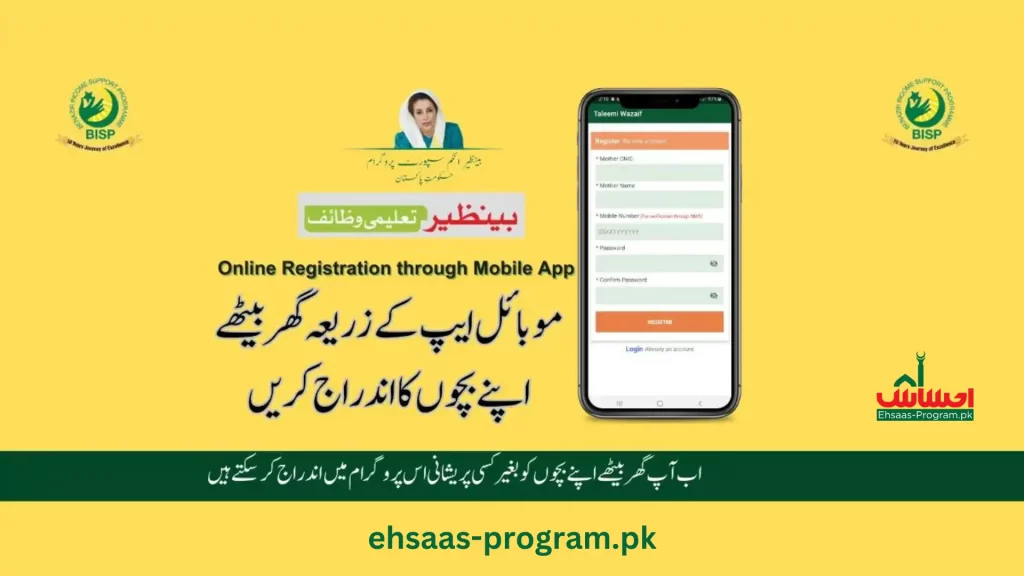Ehsaas Waseela e Taleem Program 2024-2025
The Waseela Taleem program was launched in 2012 in five districts of Pakistan and aimed to provide financial assistance to children from extremely poor households so they could continue their studies. In 2018, the program was extended to 50 districts, and in January 2020, children from more than 100 districts started to get educational stipends under this program.

Today, the waseela taleem scheme has been extended to almost all districts of Pakistan and both public and private educational institutions are playing their role to make quality education equally accessible for every child. In the government of Prime Minister Imran Khan, this program was modified a bit and added under the umbrella of the Ehsaas program.
Now, children of all the empowering women, who are already registered in the ehsaas kafalat program, are considered eligible for this waseela taleem scholarship. What are other eligibility criteria? What’s the application process? What’s the stipend amount? And what are the benefits beneficiaries could enjoy? To know the answers to these questions, keep reading the article!
Waseela Taleem Program Eligibility Criteria
The eligibility criteria that an applicant must meet to receive financial aid from this waseela taleem scholarship are as follows;
Application process
1. By visiting a nearby school camp
To apply for the waseela taleem scholarship, you (as an active beneficiary of the BISP ehsaas kafalat program) need to visit a nearby government school camp in your district with your child. The documents you need to carry along include the B-form or CNIC of the kafalat beneficiary, the school admission slip, and the B-Form of the child. Submit all these documents to the corresponding desk staff and ask them to fill out the application form for the scholarship on behalf of your child.
2. By visiting the web portal
Besides, if you have access to a stable internet connection and supporting device, you can enroll your child yourself using the digital application platform. Yes, the government of Pakistan has launched the Ehsaas waseela taleem web portal through which you can confirm your child’s eligibility for the waseela taleem scholarship and submit his application. All you need to do is to follow the given steps;
In addition to this, the government has also developed a waseela taleem app which can be downloaded from the Apple app store and Google Play store. Using this app, you can register your child for the scholarship, quickly verify your eligibility, and ensure an electronic transfer of cash aid so you won’t have to face any hassle regarding physical transactions.
The same app can be used to get updates about educational resources, concerned schools, and related services. In addition to this, the government also uses this app to track deserving families and the impact of this program on dropout and enrollment rates.
Stipend amount
The stipend amount a child will receive under the waseela taleem program may be different based on gender and grade level. For example, girls enrolled in primary school will receive a quarterly stipend of around PKR 2000 whereas boys in primary school will receive PKR 1500.
Likewise, girls who are enrolled in secondary school will receive PKR 3000 whereas boys, of the same grade level, will receive PKR 2500. Lastly, girls in higher secondary schools will be able to get PKR 4000 whereas boys will get PKR 3500 conditional cash aid.
Other benefits of the waseela taleem scholarship
Empowering women
The primary beneficiaries of the ehsaas waseela taleem scholarship are women/girls who couldn’t get access to quality education due to financial strains. Since the government is preferring children of women who are active kafalat beneficiaries, this initiative is increasing women’s role in society building and decision-making process.
Likewise, by providing a higher stipend amount to female students than males, the government aims to encourage parents to send their daughters to schools. As a result of this, not only women will be empowered significantly but the enrollment rate of girls in schools will also increase incredibly.
Breaking generational cycles
Even though this country has seen more than 75 years of its existence, some of its people are still quite conservative and don’t pay much importance to female education. This waseela taleem program aims to break these generational stereotypes and bring a positive change in the lives of people.
Similarly, the program ensures that kids from poor families could access higher education so they could utilize this weapon of education to break the poverty cycle.
Improving education and health standards
Schools that are registered under the waseela taleem scheme are the primary focus of the government which is in constant effort to improve their education quality. For this purpose, the government has introduced better teaching standards (a thing which has always been compromised in public schools). Also, various advanced resources are being made available so nothing could hinder concerned schools from delivering quality education.
In addition to this, the program ensures that every child undergoes regular medical check-ups so he could fully focus on his studies and there would be no barrier on his way toward becoming a civilized part of society.
